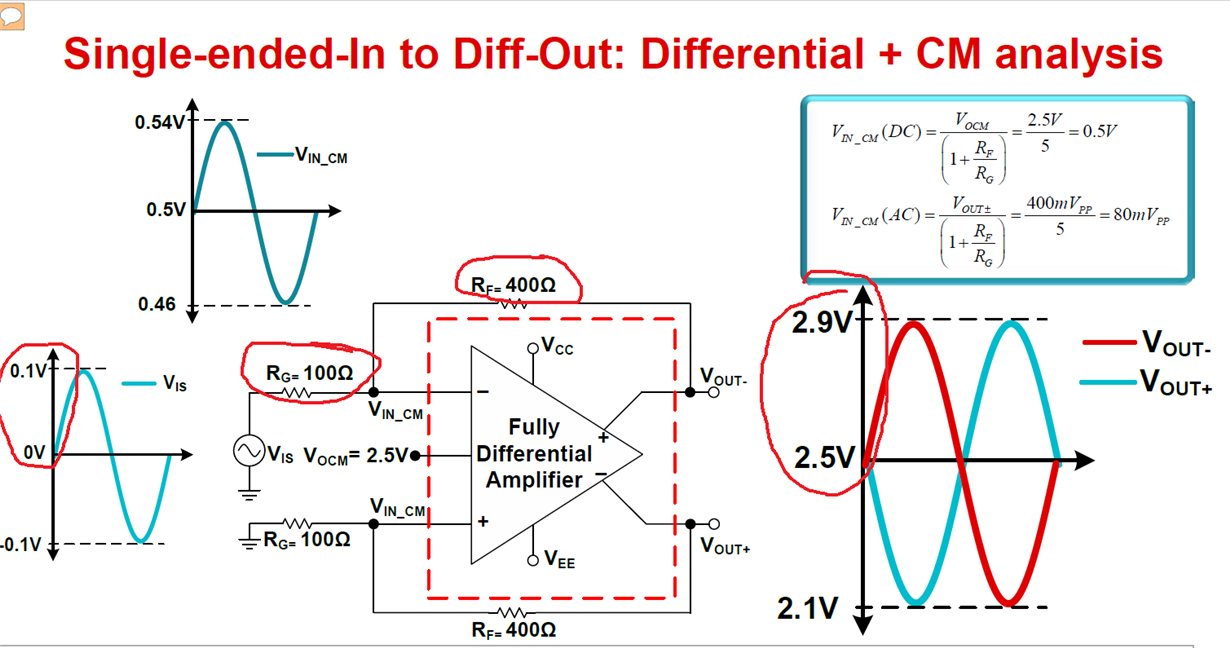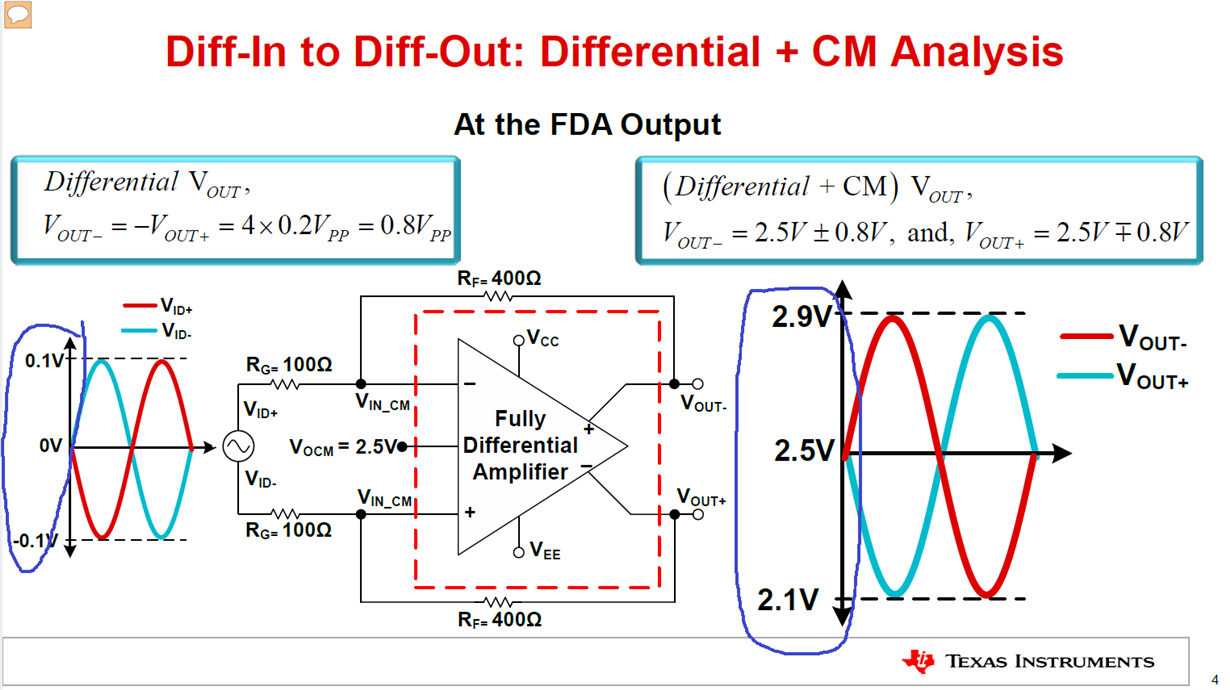Dear TI precision lab,
I have two questions regarding the TI precision lab FDA-part 2 and hopefully, someone can help here.
1. On Page 5 of the PPT of TI precision lab FDA-part 2, the equation that calculate the Vin_cm at non-driven input is (Vout+_CM - Vin_cm) / Rf = (Vis_cm - Vin_cm) / Rg. This indicates that Vis_cm is larger than Vin_cm. Since Vis_cm is zero, Vin_cm is negative. But actually, Vin_cm =0.5V. Please correct me.
2. On Page 8 of the PPT of TI precision lab FDA-part 2, why the output is 1Vpp when the input is 2Vpp and Gain is 1V/V?
Thanks,





